*The following definitions are provided by the American Academy of Periodontology
GINGIVITIS
Gingivitis is the mildest form of periodontal disease. It causes the gums to become red, swollen, and bleed easily. There is usually little or no discomfort at this stage. Gingivitis is often caused by inadequate oral hygiene. Gingivitis is reversible with professional treatment and good oral home care.
Factors that may contribute to gingivitis include, diabetes, smoking, aging, genetic predisposition, systemic diseases and conditions, stress, inadequate nutrition, puberty, hormonal fluctuations, pregnancy, substance abuse, HIV infection, and certain medication use.
PERIODONTITIS
Untreated gingivitis can advance to periodontitis. With time, plaque can spread and grow below the gum line. Toxins produced by the bacteria in plaque irritate the gums. The toxins stimulate a chronic inflammatory response in which the body in essence turns on itself, and the tissues and bone that support the teeth are broken down and destroyed. Gums separate from the teeth, forming pockets (spaces between the teeth and gums) that become infected. As the disease progresses, the pockets deepen and more gum tissue and bone are destroyed. Often, this destructive process has very mild symptoms. Eventually, teeth can become loose and may have to be removed.
There are many forms of periodontitis. The most common ones include the following.
A dental cleaning is a professional cleaning you receive from a dentist or dental hygienist. Most dental cleanings take only between 25 and 30 minutes. Cleanings should be performed every three to six months to prevent excessive plaque and tartar buildup. Plaque left untreated can lead to unhealthy gums and tooth decay. A routine dental cleaning should include scaling and polishing of the teeth.
Scaling: This is the process of removing plaque and tartar from all tooth surfaces in a variety of methods, depending on the amount of plaque and tartar. Dental hygienists traditionally perform scaling by hand. However, new and advanced technology has lead to more modem methods such as ultrasonic scalers. This sophisticated instrument allows dental cleanings to be performed more efficiently. To achieve best results, both ultrasonic and manual scaling methods are combined for dental cleanings.
One of the newer technologies offered in conjunction with Invisalign is AcceleDent. AcceleDent is a Class II FDA approved device that uses soft pulse technology and cyclic forces to accelerate the movement of teeth by up to 50%. With this technology you can potentially cut your Invisalign treatment time in half. Read more about it at www.acceledent.com

This treatment describes the removal of the nerve tissue and blood vessels located inside a tooth. A tooth’s root cannot be left hollow, so the area is filled or sealed up with a caulk-like material. The predictability of a root canal depends on both the quality of the diseased tooth and the technique used to treat it.
Root canals are described as a “therapy” and not a cure. Not all cases are successful even though the dentist did everything correctly. For this reason, difficult teeth are usually best treated by a specialist. We have an excellent relationship with the area’s top specialists to help you get a high quality root canal treatment if the need arises. As was mentioned, not all diseased and damaged teeth are preserved indefinitely with root canal treatment. However, when conditions are favorable, a well done root canal is successful well over 90% of the time.
Here is what an X-Ray of a root canal treated tooth looks like:

A bridge can be used to replace missing teeth when there are enough healthy teeth in the area to connect to. Bridges are permanent like crowns and are not removable. Sometimes they are the best choice to replace a missing tooth when an implant is not feasible.
Here is an example of a bridge done in our office:
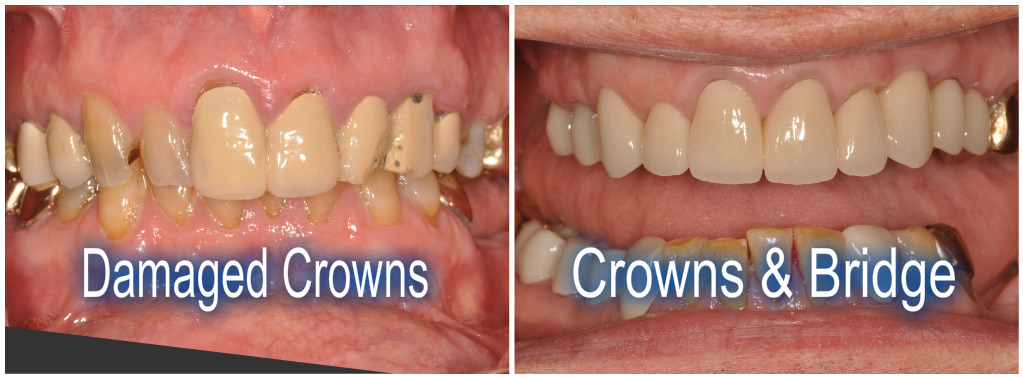
Most crowns today are made from a tooth colored porcelain. In our office, the majority of crowns are made while you wait. This means no more temporary crowns or second appointments to have them placed. These crowns are designed and milled with Sirona’s Cerec CAD/CAM technology.
Here is a case done in our office:
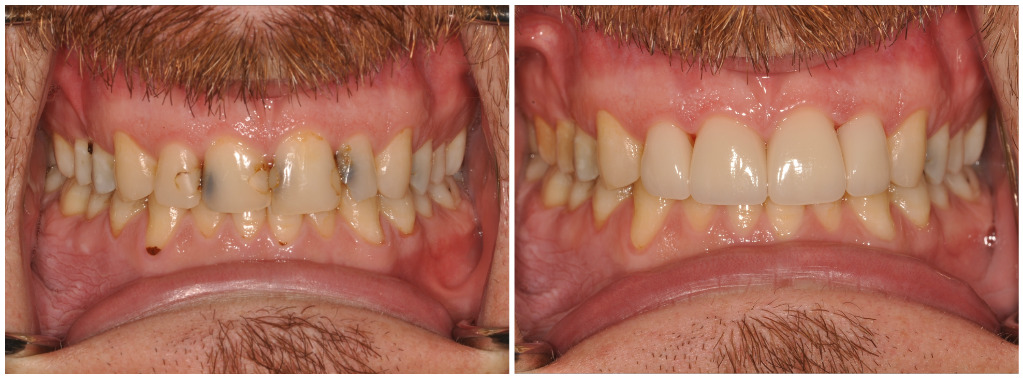
There are many ways to replace a few missing teeth. “Partials” can be made out of metal and plastic, or just plastic. Cost can vary depending on the materials used in the construction and the technique used to fit the appliance to the mouth.
For upper teeth, there is a flexible partial that blends into the surrounding gum and looks great. This type of partial is best used when the patient values cosmetics and comfort.
Flexible Partial
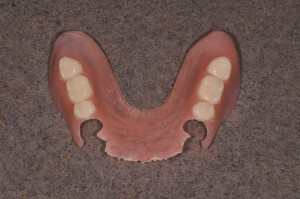
The traditional metal-based partial is more expensive than the others. Though it doesn’t look as good as a flexible partial, it is the most durable and long lasting. This type is best used when teeth are missing in the lower jaw or when there are only a few remaining natural teeth.
Metal Base Partial
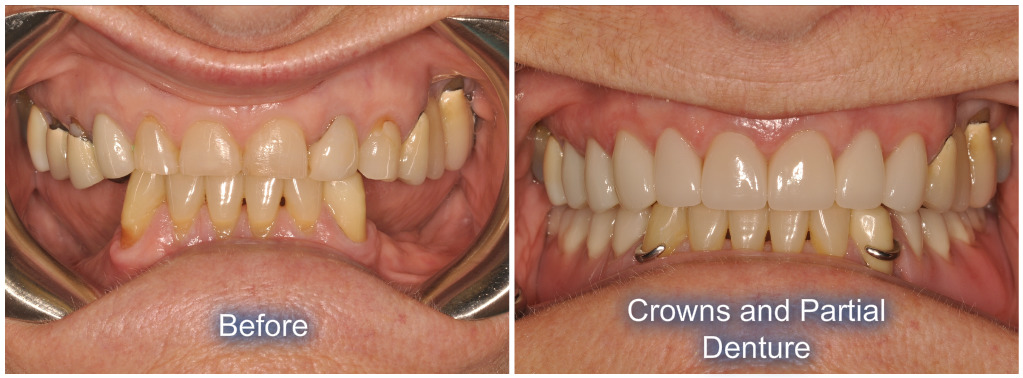
The least expensive is a “flipper.” This is like an old fashion pink orthodontic retainer with teeth on it (pictured below on left). As an alternative, there is also a clear retainer with teeth that can be used for cosmetic purposes (pictured below on right). These temporary solutions are designed as an inexpensive cosmetic treatment for missing front teeth. They are not intended for chewing.
Temporary Partials
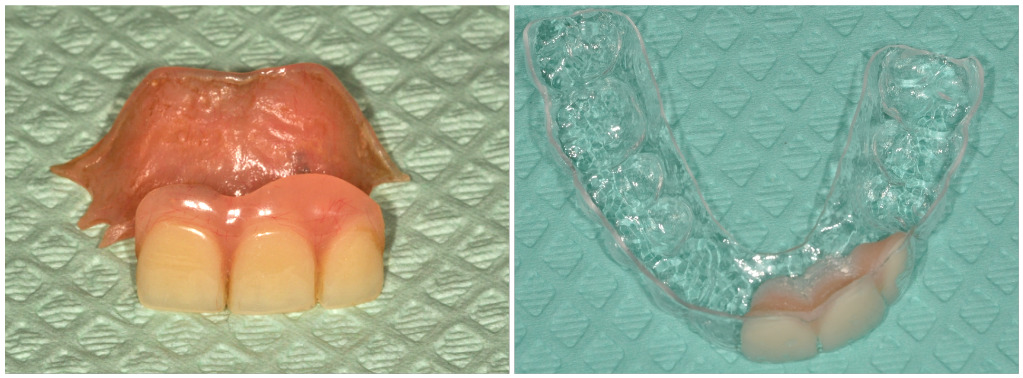
These are made for people that are missing all of their teeth in one or both jaws. We use high quality industry standard acrylic for the teeth and gum construction. Our complete dentures are custom made and fitted over a few appointments. We are not a denture-in-a-day clinic. Instead, if you are looking for an office that takes the time and effort to create a smile that is suited to your liking, you have found the right place.
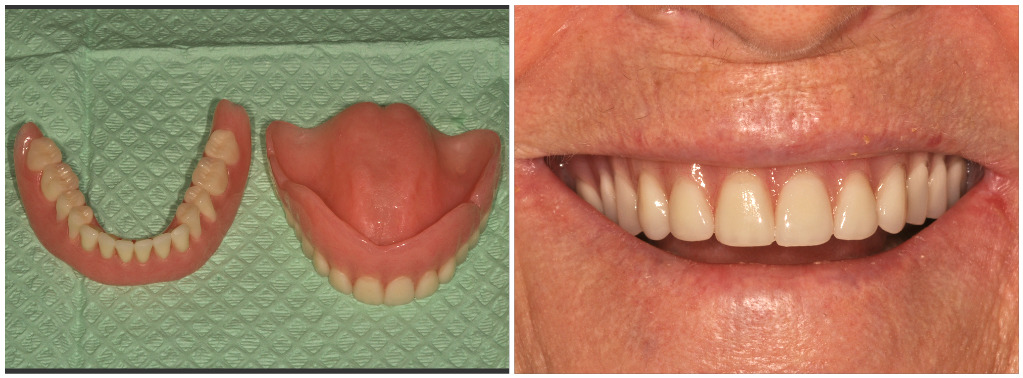
Full Arch Implants
One of the most common complaints from a denture wearer is that their teeth move around and cause sore spots. Some complain that it is hard to chew because their teeth won’t sit still. This is especially true for lower dentures. Ask your friends or relatives that have full dentures, they are sure to agree.
Implants can be used to attach the dentures to the jaws. In doing so, much of the plastic that covers the top and sides of the denture can be removed. This makes wearing the dentures much more enjoyable. After all, the teeth don’t move anymore, chewing ability improves, food textures return to normal, and sore spots do not develop.
There are many ways to configure how and where the teeth are attached to the patient’s mouth. Most allow the patient to remove the teeth at night and clean them. However, if the patient prefers, the teeth can be made to stay in permanently with removal only possible by the dentist.
As with most things, there are pros and cons to each approach to dentures that are attached with implants. The many options allow patients to find a proposal that suits their budget and needs.
Here are some cases restored in our office:
(Removable by the Patient)
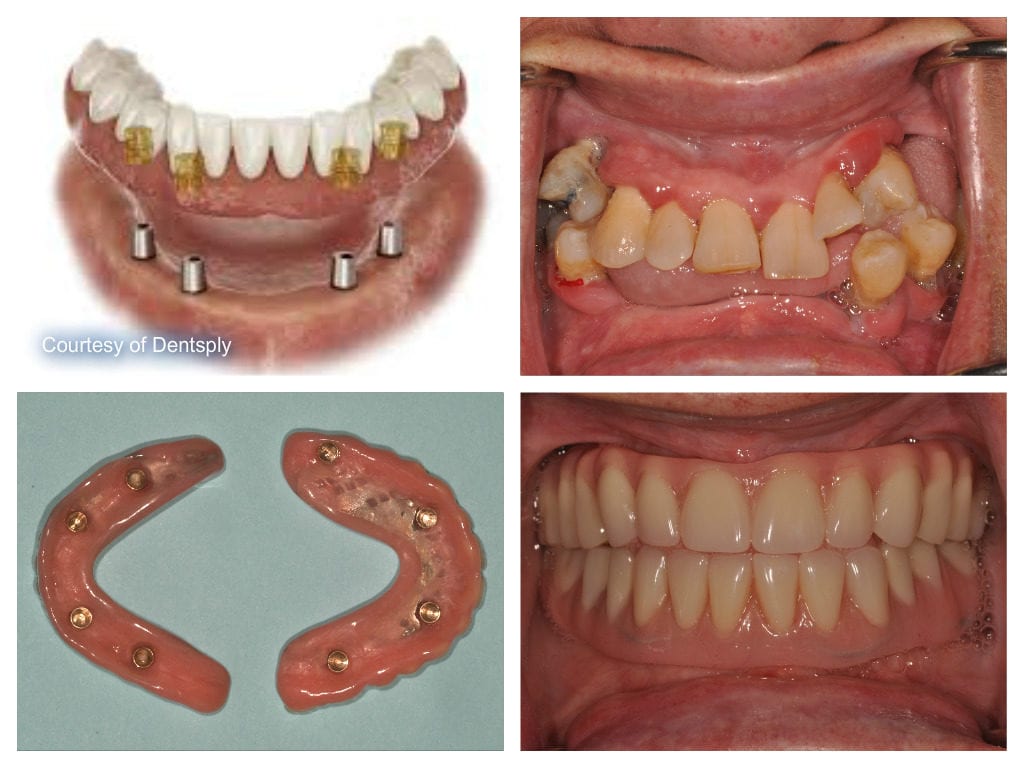
(Not Removable by the Patient)
